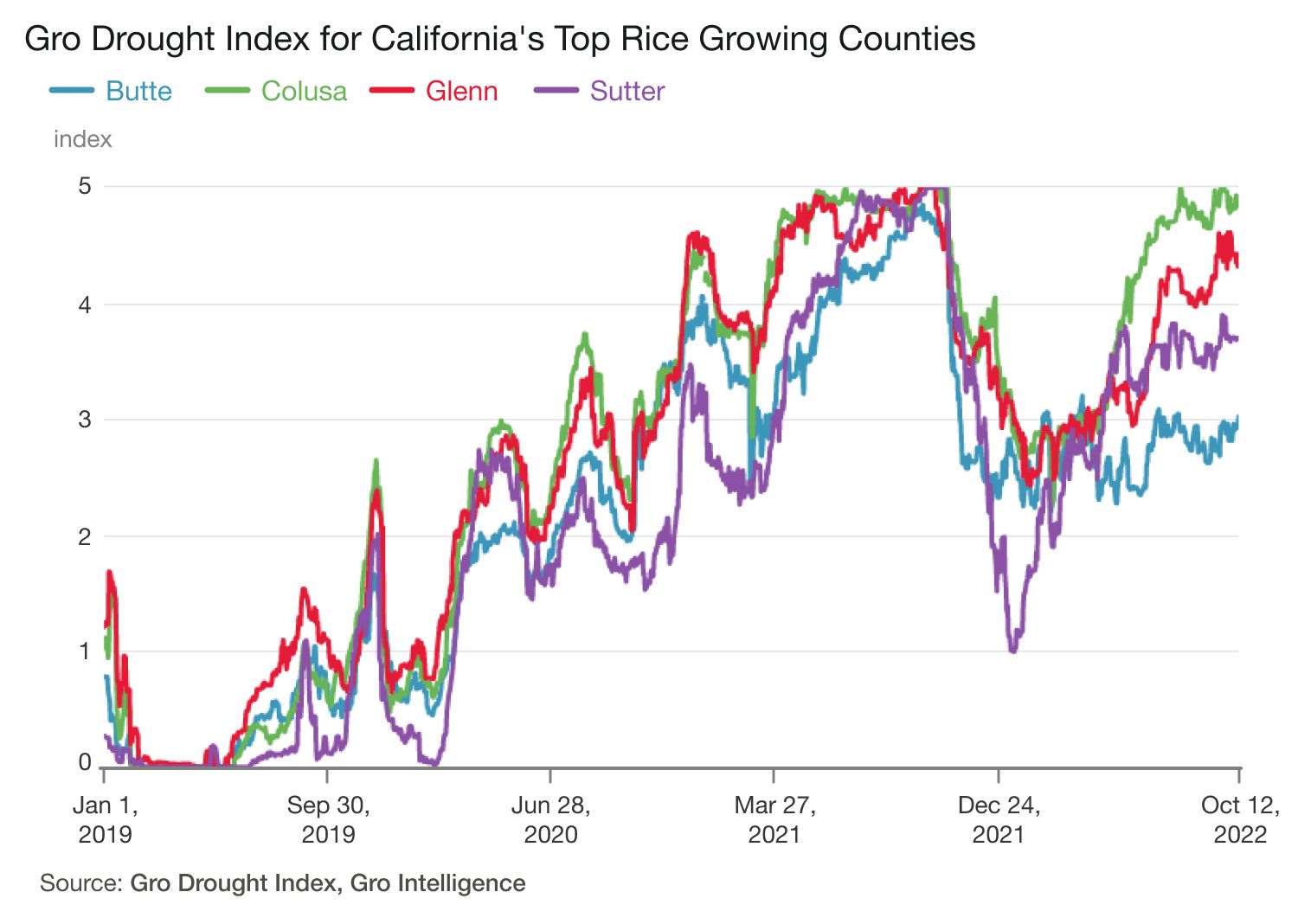
Posted on October, 18, 2022 at 10:01 am
Worldwide rice production for 2022/23 will shrink for the first time in three years after extreme weather events — from China to South Asia and California — damaged harvests.
The production decline represents a reversal after consecutive years of bigger rice crops. The resultant plentiful supplies, especially in top exporter India, have helped to temper global rice prices, even as prices for other agricultural commodities have swung sharply in the wake of Russia’s invasion of Ukraine.
Now, tightening supplies of rice, the world’s No. 3 most cultivated grain, could add upward pressure on rice prices and threaten to accelerate food insecurity and food price inflation in many countries.
This Gro Portal Display highlights the tightening of rice supplies globally, with charts of production, exports, and inventories.
Rising rice prices are already having an impact, prompting trade protectionist measures. India, normally the world’s No. 1 rice exporter, in September banned exports of broken rice and set a 20% duty on exports of certain other types of rice. Those actions, coming on top of additional trade restrictions by India and other countries, further squeeze the world’s available supplies of a variety of grains and oilseeds, as Gro wrote about here.
Global production of rice is forecast to decline 2% year over year, according to USDA estimates.

Multiple drought years have depressed rice acreage in California, the No. 2 rice producing state in the US. This chart from the Gro Portal shows the Gro Drought Index — which measures drought on a scale from 0 to 5 — for California’s biggest rice growing counties.
Rice is the primary staple for more than half the world's population, especially in Asia and Africa, and many of these countries rely heavily on imported rice. Asia is the largest rice importing region — largely due to China’s use of broken rice in animal feed — followed by Africa, where Nigeria, Ivory Coast, and Senegal are the top three importers. Middle Eastern countries also are big buyers of rice.
Rice is grown around the world, sometimes with multiple growing seasons within a country. Gro’s extensive platform of data analytics, apps, and indices provide up-to-date readings on crop growth around the world. This includes Gro’s Climate Risk Navigator for Agriculture, which gives users a view into the short-term weather situation and long-term climate outlook. The application can generate real-time and historical analyses weighted for a specific crop and location in a matter of seconds.
Source: Gro Intelligence